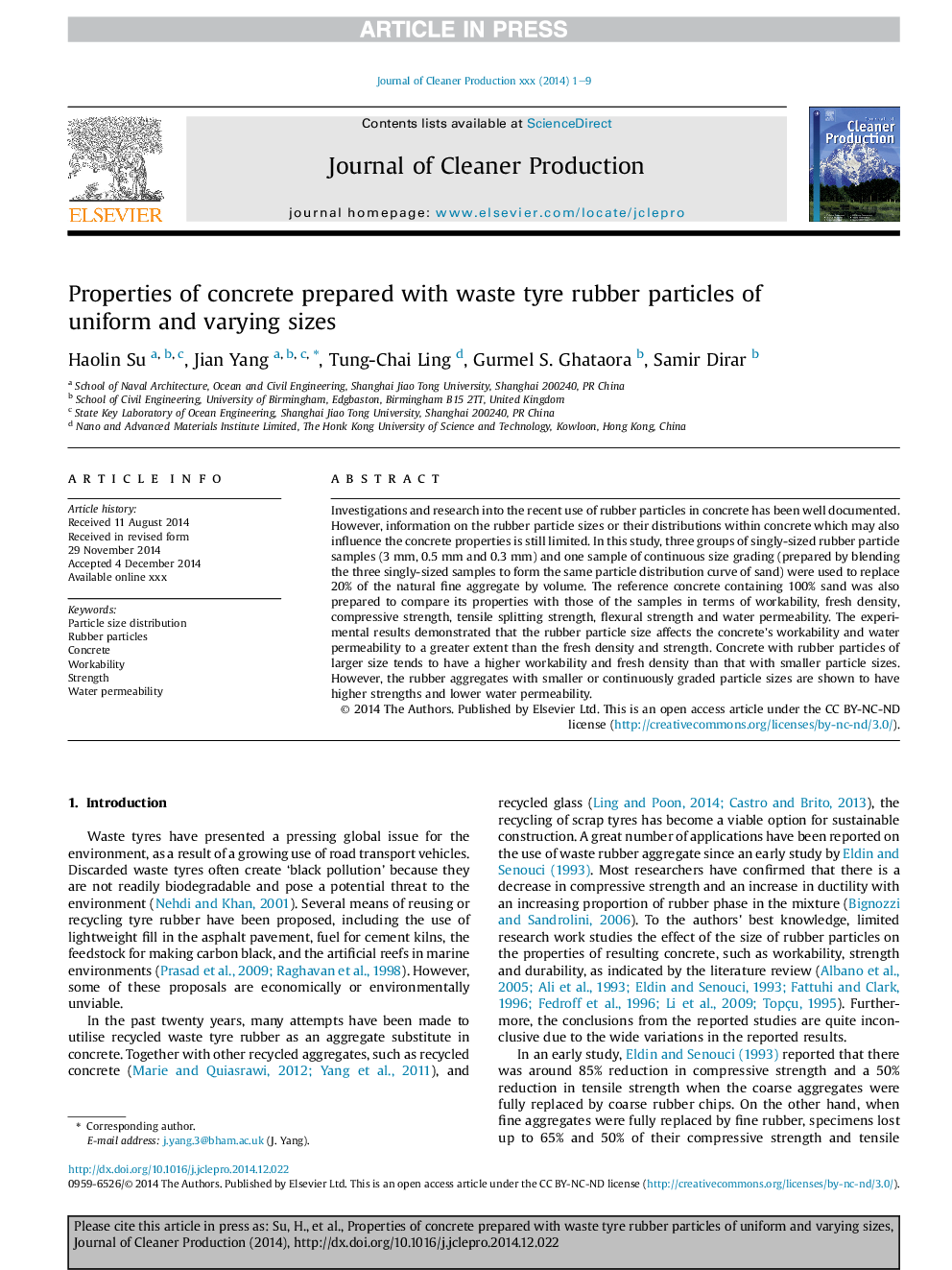| Article ID | Journal | Published Year | Pages | File Type |
|---|---|---|---|---|
| 8104998 | Journal of Cleaner Production | 2015 | 9 Pages |
Abstract
Investigations and research into the recent use of rubber particles in concrete has been well documented. However, information on the rubber particle sizes or their distributions within concrete which may also influence the concrete properties is still limited. In this study, three groups of singly-sized rubber particle samples (3Â mm, 0.5Â mm and 0.3Â mm) and one sample of continuous size grading (prepared by blending the three singly-sized samples to form the same particle distribution curve of sand) were used to replace 20% of the natural fine aggregate by volume. The reference concrete containing 100% sand was also prepared to compare its properties with those of the samples in terms of workability, fresh density, compressive strength, tensile splitting strength, flexural strength and water permeability. The experimental results demonstrated that the rubber particle size affects the concrete's workability and water permeability to a greater extent than the fresh density and strength. Concrete with rubber particles of larger size tends to have a higher workability and fresh density than that with smaller particle sizes. However, the rubber aggregates with smaller or continuously graded particle sizes are shown to have higher strengths and lower water permeability.
Related Topics
Physical Sciences and Engineering
Energy
Renewable Energy, Sustainability and the Environment
Authors
Haolin Su, Jian Yang, Tung-Chai Ling, Gurmel S. Ghataora, Samir Dirar,
